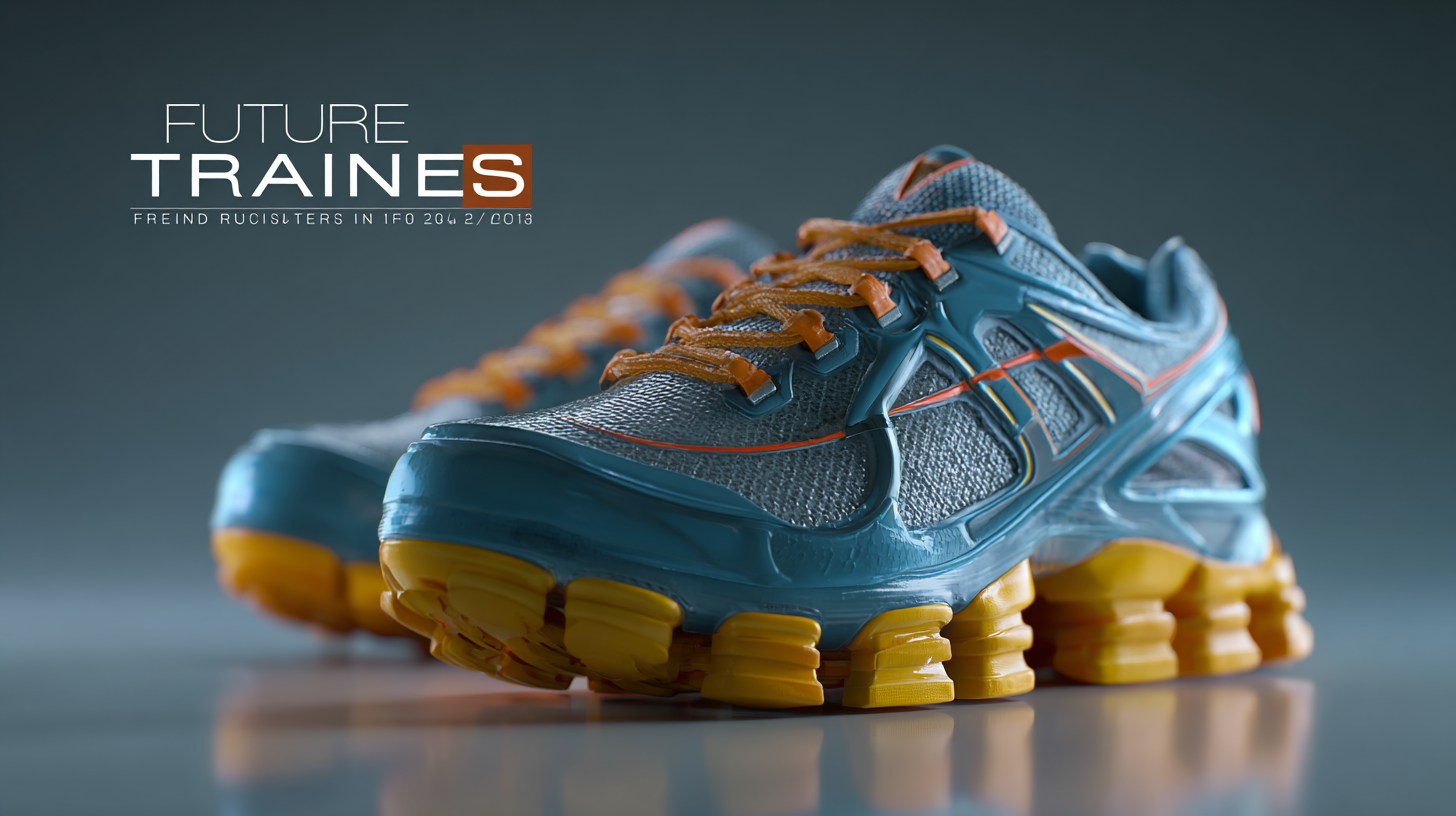
As we approach 2025, the running trainers industry is poised for significant advancements driven by innovations in technology, sustainability, and consumer behavior. According to a recent report by Market Research Future, the global running footwear market is projected to grow at a compound annual growth rate (CAGR) of 6.2%, reaching approximately $16 billion by 2025.
 This growth is attributed to the increasing popularity of fitness and wellness trends, with more individuals embracing running as a key component of their daily exercise routine. Additionally, a shift towards eco-friendly materials in product manufacturing is gaining traction, as consumers increasingly demand sustainable options in their running trainers.
This blog will provide a comprehensive checklist of future trends shaping the running trainers industry, ensuring that both brands and consumers are well-prepared for the dynamic landscape ahead.
This growth is attributed to the increasing popularity of fitness and wellness trends, with more individuals embracing running as a key component of their daily exercise routine. Additionally, a shift towards eco-friendly materials in product manufacturing is gaining traction, as consumers increasingly demand sustainable options in their running trainers.
This blog will provide a comprehensive checklist of future trends shaping the running trainers industry, ensuring that both brands and consumers are well-prepared for the dynamic landscape ahead.
The running trainers industry is poised for significant advancements by 2025, primarily driven by the emergence of innovative materials that enhance both performance and comfort. Lightweight and breathable fabrics, such as engineered mesh and knitted constructions, are becoming increasingly popular. According to a recent market report, the global athletic footwear market is projected to reach $100 billion by 2025, with a significant portion attributed to the demand for breathable running shoes. These new materials not only improve ventilation but also reduce weight, allowing runners to exceed their personal bests without the added fatigue of heavier footwear.
When selecting your next pair of running trainers, consider looking for shoes made with materials like Gore-Tex or polyester blends, which offer superior moisture-wicking capabilities and long-lasting durability. Additionally, brands are now experimenting with recycled materials, aligning with the sustainability trend in the industry. This shift not only benefits the environment but also caters to consumers who are increasingly concerned about eco-friendly products.
Tip: Always try on running trainers and take them for a short test run in-store to ensure they provide the right fit and comfort level for your foot shape and running style. Investing in trainers that feature these innovative materials can significantly improve your running experience, making each step feel lighter and more responsive.
| Material Type | Weight (grams) | Breathability Rating | Durability (cycles) | Sustainability Index |
|---|---|---|---|---|
| Graphene | 200 | 95% | 10,000 | 8/10 |
| EVA Foam | 250 | 88% | 7,000 | 7/10 |
| Bio-based Materials | 230 | 90% | 6,500 | 9/10 |
| Knitted Uppers | 220 | 92% | 8,500 | 8/10 |
| 3D Printed Materials | 210 | 87% | 9,000 | 8/10 |
As the running trainers industry gears up for 2025, the integration of smart technology and data analytics is set to revolutionize runner performance. According to a recent report by Grand View Research, the global smart footwear market is expected to reach $3.6 billion by 2025, driven by advancements in wearable technology. These intelligent trainers will monitor various metrics such as pace, distance, and even biomechanical patterns, providing athletes with real-time feedback to enhance their training routines.
One significant trend is the use of predictive analytics to personalize training plans. By analyzing data collected during runs, brands can offer tailored recommendations, optimizing each runner's performance based on their unique metrics. For instance, runners might receive insights into when to increase mileage or adjust their form to prevent injuries, effectively minimizing downtime.
Tip: To maximize the benefits of these advancements, runners should choose trainers equipped with integrated sensors that capture vital performance data. Moreover, maintaining a consistent training log can help track progress over time and adapt strategies based on the analytics provided. By embracing these smart technologies, athletes will not only improve their efficiency but also gain a competitive edge in their running journey.
The running shoe industry is undergoing a transformative shift as sustainability becomes a paramount concern for both manufacturers and consumers. By 2025, we can expect running shoe brands to adopt innovative eco-friendly practices, significantly reducing their environmental footprint. One of the most promising trends is the use of biodegradable materials in shoe production. Brands are exploring options like organic cotton, recycled plastics, and plant-based foams, which not only perform well but also decompose naturally after their life cycle, leaving minimal waste.

Another aspect of sustainable production practices is the implementation of circular economy principles. Running shoe companies are moving towards a model where products are designed for longevity and recyclability. This includes take-back programs where customers can return their old shoes for recycling, effectively reducing landfill waste. Furthermore, advances in manufacturing technologies such as 3D printing are enabling brands to produce tailored shoes with less material waste. As awareness of environmental issues continues to grow, the push for eco-friendly trends in running shoe manufacturing will redefine industry standards and attract a more conscientious consumer base.
As we look towards 2025, the running trainers industry is on the brink of a customization revolution. The rise of personalized trainer designs is set to transform how runners choose their equipment, making it more than just a matter of function; it’s becoming a matter of individual expression and comfort. Advances in technology have enabled brands to use 3D printing and AI-driven design tools, allowing runners to accurately assess their biomechanical needs and preferences. This level of personalization not only enhances performance but also ensures that runners feel a deeper connection to their footwear.
Moreover, the trend of customized trainers is not limited to just performance features. Aesthetic choices are also tailored to fit the unique styles of individual runners. From color schemes to unique patterns, the ability to personalize visual elements will cater to a diverse array of tastes, empowering runners to express their personalities through their footwear. This emphasis on individualized design promises to attract a broader audience, ultimately changing the landscape of the running trainer market as consumers increasingly prioritize products that reflect their identities and enhance their running experiences.
This chart illustrates the projected market interest for various trends in the running trainers industry by 2025. Customization is predicted to dominate, with eco-friendly materials and smart features also gaining significant traction. Lightweight design is expected to be favored, while affordability remains a secondary consideration.
The running trainers industry is poised to experience significant transformation in 2025, driven by an evolving landscape of consumer preferences and technological advancements. Key players in the market are expected to leverage innovations such as advanced materials and sustainability practices to enhance performance and comfort. Brands that prioritize eco-friendly manufacturing processes and recyclable materials will likely gain a competitive edge, as consumers become increasingly conscientious about their purchases.
Growth opportunities in the running trainers sector will also emerge from the integration of smart technology. Wearable fitness trackers embedded in shoes will provide runners with real-time feedback on their performance and health metrics, fostering a more personalized running experience. Additionally, collaborations between athletic brands and tech companies will create footwear that not only meets the physical demands of runners but also enriches their training regimens. As the industry adapts to these trends, companies that align their strategies with consumer desires for sustainability and smart solutions are likely to thrive in the competitive marketplace of 2025.

